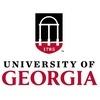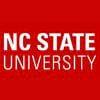Explore all the information on
Poultry management
Poultry management usually refers to the husbandry practices or production techniques that help to maximize the efficiency of production. Sound management practices are very essential to optimize production. Scientific poultry management aims at maximizing returns with minimum investment. A carefully controlled environment that avoids crowding, chilling, overheating, or frightening is almost universal in poultry farming. Cannibalism, which expresses itself as toe picking, feather picking, and tail picking, is controlled by debeaking at one day of age and by other management practices. The feeding, watering, egg gathering, and cleaning operations are highly mechanized. Birds are usually housed in wire cages with two or three animals per cage, depending on the species and breed, and three or four tiers of cages superposed to save space. Cages for egg-laying birds have been found to increase production, lower mortality, reduce cannibalism, lower feeding requirements, reduce diseases and parasites, improve culling, and reduce both space and labour requirements.
The rising global demand for animal protein means that traditional ways of livestock farming are no longer enough to optimize poultry production. Instead we need to look at using a combination of science, expert knowledge, intelligent software and...
Comments : 1
Recommendations: 2
Martin Smith, Technical Service Director, Animal Nutrition, explains how Evonik has recognised the need to expand its services to meet the growing challenges faced by nutritionists and livestock production managers; building on the company’s strong foundation and experience in animal ...
Comments : 2
Recommendations: 11
Tom Tabler (Mississippi State University) explained the best way to use sprinklers to control humidity and temperature, during IPPE 2020 in Atlanta, USA....
Comments : 1
Recommendations: 3
1. Introduction Microbiota is defined as the microbial community, including commensal, symbiotic and pathogenic microorganisms, which colonise different areas of animals and have an important influence on animal health, productivity and disease control [1–9]. Hence, the presence of beneficial microbiota plays an important role in production, protection from pathogens, control of epithelial cell proliferation and differentiation, detoxification (controlling the behavioural...
Comments : 0
Recommendations: 0
1. Introduction The population of the world is growing at exponential rates and, according to United Nation’s Revision of World Population Prospects https://esa.un.org/unpd/wpp/), it is projected to reach a number of over 9.7 billion by 2050. This population growth poses issues that may affect the sustainability of demographic, social and economic systems. More specifically, one of the main challenges consists of finding a way to feed all these people and agriculture,...
Comments : 0
Recommendations: 0
A week long Online Hatchery Management Training will take place from September 16th to 22nd, 2020. It is organized by Vet Nepal in association with Nepal Hatchery Industries Association, and will feature 5 national and 12 international Hatchery Specialists as speakers.
...
Comments : 1
Recommendations: 1
How do you calculate European Efficiency Factor in Broiler performance? ...
Comments : 7
Recommendations: 0
1. Introduction Poland has the third-largest number of laying hens in the European Union, with over 48.5 million of the birds in 2018 and 649 thousand tonnes of eggs (sixth place) produced in 2019 [1]. Such intensive poultry production carries with it an environmental impact associated with emissions of ammonia (NH 3 ) and volatile organic compounds (VOCs). Those gaseous emissions are of concern to workers, local communities, birds and the environment. Additionally,...
Comments : 0
Recommendations: 0
Profitability in poultry production can only be optimized when everything goes right, and that includes keeping the birds healthy.
Hygienic Water supply system is one of the most important key factors for good health and growth of poultry. It is important for water to remain hygienic all the way until it reaches the birds, and so water & drinker lines hygiene must be a focus of attention for the farm. Water lines should be...
Comments : 47
Recommendations: 2
1. Introduction The scope of this review is limited to agricultural concrete and metallic structures exposed to a corrosive environment. The content of the review paper includes the following topics and subtopics: agricultural concrete and metallic structures (impact of poultry, cattle, and swine manure), specific impact of corrosion on steel structures, corrosion, and degradation of metallic structures (corrosion in the farm environment, activity of fungi and bacteria,...
Comments : 0
Recommendations: 0
If high moisture level is built up in the poultry house in bedding material then what would be the best way to remove it? ...
Comments : 30
Recommendations: 0
The Evonik Corporation award is an annual award given as an achievement award, i.e., for distinctive contributions to poultry science advancement, covering a period of not more than seven years preceding the annual award.
Kenneth E. Anderson North Carolina State University
Kenneth E. Anderson, Professor and...
Comments : 0
Recommendations: 1
I have a batch of 3,000 chicks at seven weeks old and the flock is very uneven. I was thinking about separating the smaller ones from larger ones; replacing the grower feed to the larger ones and continue feeding starter feed to the smaller ones. After two weeks I would put all chicks together again. Do you think this could be a good measure? What’s your opinion? ...
Comments : 34
Recommendations: 0
Measuring wind speed/air velocity in a tunnel-ventilated house can be a challenge. Even in the best designed house wind speeds will vary hundreds of feet per minute depending on when and where it is measured. Wind speeds tend to be highest toward the center of the cross-section and lowest near the floor next to the side walls. How much the wind speed varies depends on house construction, the number of fans operating, proximity to the tunnel fans or tunnel inlet,...
Comments : 2
Recommendations: 1
This award is given to recognize PSA members for conducting an outstanding program of work in the area of poultry extension and outreach during a five-year period. This is an annual award and it was given during this year's PSA Virtual Annual Meeting.
The PSA announcement highlights Tabler's achievements throughout...
Comments : 0
Recommendations: 0
Georgia poultry farmers produce more than 2.0 million tons of poultry litter/manure annually in the process of producing meat and eggs. Fortunately, when stored and applied appropriately, this material has value as an organic fertilizer and soil conditioner. As a result, poultry litter/manure has been applied to Georgia’s soils dating back to the beginning of the poultry industry in Georgia in the 1950s. The nutrients and...
Comments : 3
Recommendations: 7
Todd Applegate (University of Georgia) speaks about how Phytogenics function in the birds, Food safety and processing, Poultry Production and management systems, among other topics in this webinar series hosted by Dr. Raina Raj of Natural Remedies....
Comments : 0
Recommendations: 1
...
Comments : 1
Recommendations: 1
...
Comments : 0
Recommendations: 3








.jpg&w=3840&q=75)





.jpg&w=3840&q=75)



.jpg&w=3840&q=75)





.mp4&w=3840&q=75)







